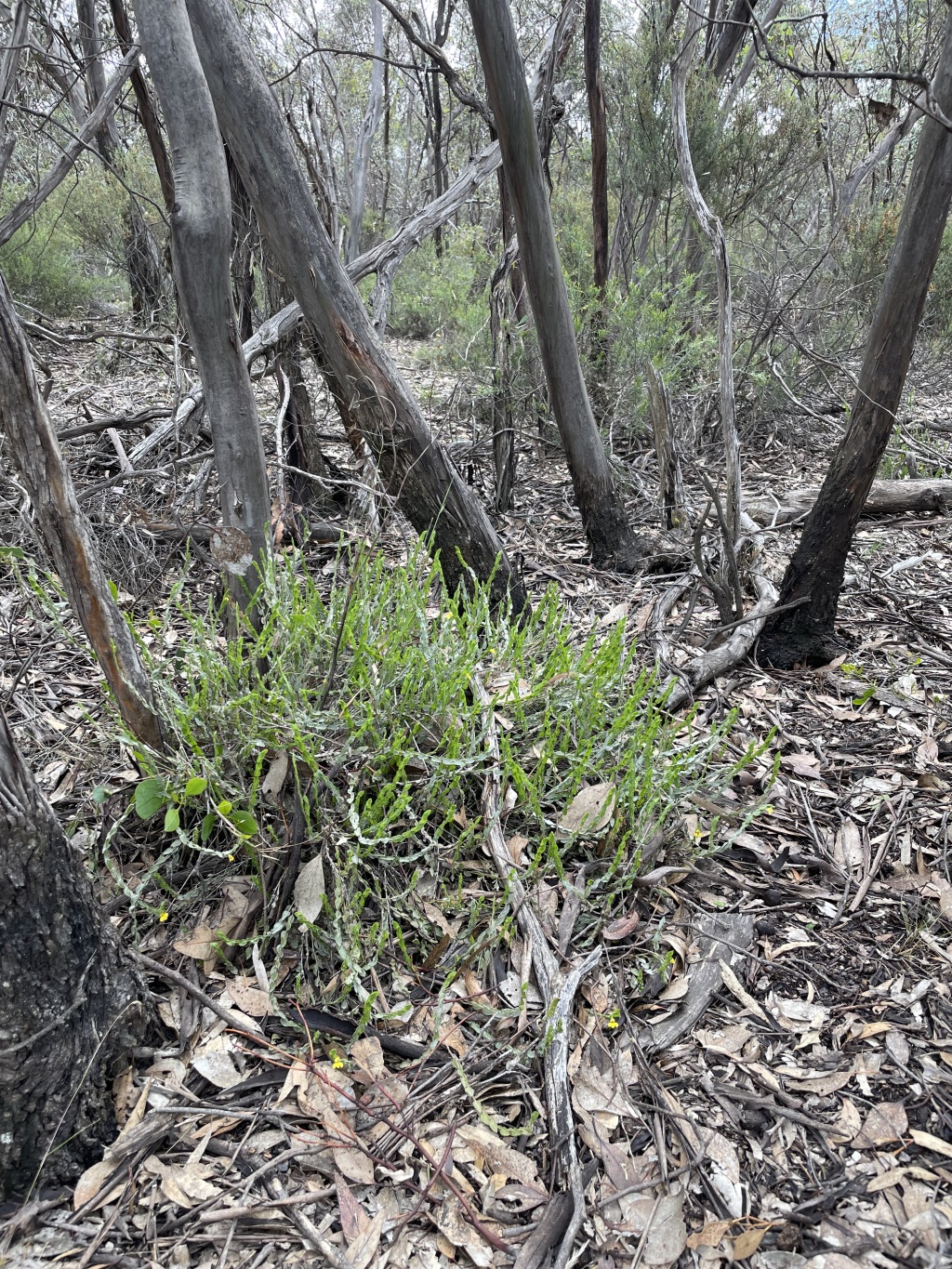Goodeniaceae
Herbs or shrubs, rarely scramblers, annual or perennial. Leaves mostly alternate, simple, entire to lobed; stipules absent. Inflorescences terminal or axillary, dichasia, thyrses, racemes, umbels, spikes, heads or of solitary flowers. Flowers bisexual, zygomorphic, rarely actinomorphic; bracteoles often present. Sepals 3 or 5, free or fused; corolla tubular, slit on lower side, 5-lobed, 2-lipped or fan-like, rarely connate with 5 radiating lobes; stamens 5, epigynous or rarely almost hypogynous, alternating with corolla-lobes, anthers 2-celled, basifixed, free or fused around style, dehiscing by longitudinal slits; ovary inferior to superior, usually incompletely 2-celled, ovules 1–several per cell, style terminated by a pollen cup or indusium which collects and exposes pollen, stigma small, usually 2-lobed, contained within indusium. Fruit a drupe, nut or capsule; seeds 1–several, often flattened and winged, caruncle present or absent, endosperm present, rarely absent.
7 genera with c. 500 species, mostly in Australia and New Guinea but also India, South-east Asia, the Pacific, New Zealand and Chile; 12 genera and c. 408 species in Australia.
Molecular studies have resulted in the rearrangement of the generic composition, reducing Selliera, Velleia, Pentaptilon and Verreauxia (the latter 2 genera not Victorian) to synonyms of Goodenia (Shepherd et al. 2020).
Jeanes, J.A. (1999). Goodeniaceae. In: Walsh, N.G.; Entwisle, T.J., Flora of Victoria Vol. 4, Cornaceae to Asteraceae, pp. 589–615. Inkata Press, Melbourne.
 Spinning
SpinningShepherd, K.A.; Lepschi, B.J.; Johnson, E.A.; Gardner, A.G.; Sessa, E.B.; Jabally, R.S. (2020). The concluding chapter: recircumscription of Goodenia (Goodeniaceae) to include four allied genera with an updated infrageneric classification.. Phytokeys 152: 27–104.



